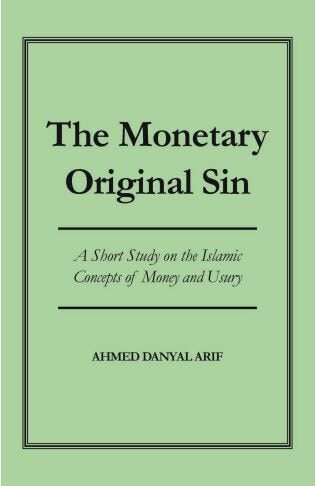Jibran Raja, UK

Ahmed Danyal Arif’s comprehensive analysis of interest and its role in religion is a concise yet eye-opening read. With particular reference to Islam’s prohibition of usury, the author takes the reader on a journey through time, beginning with the nature and historical origins of money and interest, through to the varying attitudes of society and religious groups towards usury. Finally, the reader is acquainted with the rationale underlying Islamic attitudes towards interest and how the alternatives of Zakat and equity financing are unshakeable pillars for a fairer alternative economic system: a system that could help to resolve the financial woes much of the world is entrenched in today. In a world where countries in every corner are facing mounting struggles with debt, it is perhaps apt for society to consider whether such an alternative may put them in better stead to meet future economic challenges.
One particularly positive aspect of the book was its highly accessible style, which was clear and lucid for a reader of any academic background, despite the author’s expertise in economics. Indeed, from the very onset, the author provides information from a wide array of sources, including philosophical and historical ones. For instance, while being introduced to the three primary purposes of money, the reader is acquainted with Aristotle as one of the key thinkers to theorise about this topic. Similarly, we are introduced to competing ideas between classical and Keynesian thinkers regarding the nature of money and how far it influences the real economy beyond its primary role as a means of exchange.
A recurring theme throughout the book is how an economic system underpinned by interest is a weight on the healthiness of economic relations in society (despite its prevalence). For example, the author explores how interest has historically been utilised as a means of economic exploitation, with debt acting as a chain around the neck of the indebted. In modern history, such enchainment is embodied by the economic relations between the economies of the global north and the global south, even in a post-colonial world. Ever-increasing debt can thus quickly translate into political constraints for the nations that fall under its burdens. Furthermore, in chapter three, readers are acquainted with arguments in favour of interest, such as the notion that it allows savers to be rewarded for their ‘abstinence’ from spending. These arguments are, in turn, ‘debunked’, such as through the notion that lenders are still meeting their needs and that such an argument ignores the reality that moneylenders have the power to create money out of nothing. Such realities mean a large power gap between lender and borrower, a gap defined by interest.
More importantly, the author further fortifies his thesis by pointing to moral arguments against interest. These can be briefly expanded upon as interest being contrary to human nature and the effect of interest on moral virtues such as generosity and altruism. For instance, according to the entropic laws of nature, material possessions gradually deteriorate and fade over time. The principle of interest, however, is incompatible with these natural laws, where this mainly seems to be the case concerning compound interest. In the author’s words, ‘bread rots, loans at interest don’t’ but increase exponentially. The adverse effects of such a system go far beyond a mere mismatch with reality; they permeate human nature and corrode moral values by cutting off ‘sources of human sympathy’. In an interest-ridden society, it doesn’t matter whether the indebted is in straightened circumstances or whether their enterprises have succeeded or failed: the lender always expects his sum back with added value. Since the risk is not shared, the system works to the heavy advantage of the lender, undermining both morals and the efficacy of the economic system as a whole.
In the final chapter, the author elaborates on why the Islamic system is healthier and likelier to provide fairer and more economically beneficial outcomes than the current system. The primary arm of this is Zakat, which acts as a means of both preventing capital accumulation and allowing for a means to fund programmes directed toward the welfare of all members of society. With reference to the principle of entropy, we can see that Zakat provides for the constant flow and interchange of money, likened to the necessity of flowing water to ensure its cleanliness. A second arm of this system is equity financing through healthier means, which allows for greater risk-sharing between borrower and lender. According to the author, such partnerships would help enable a more stable economic system, one that is characterised by a more cordial relationship between borrower and lender.
All in all, the book provides an essential insight into the interest-ridden lending system that characterises society today and allows the reader to better comprehend its underlying flaws. A challenge to the economic orthodoxy, the book also theorises possible solutions to these flaws. Perhaps a future edition could do more to unpack the more comprehensive economic flaws characterising modern economic society beyond interest and commit to an analysis of overcoming these flaws through the lens of Islamic economics.
Note: The views expressed in this review or the book do not necessarily reflect the official position of the Ahmadiyya Muslim Community.

